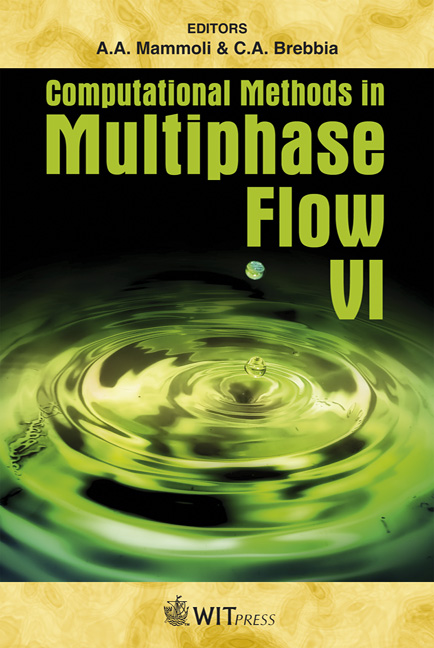Studies Of Different Numerical Models For A Turbulent Particulate Flow In A Square Pipe With 90° Bend
Price
Free (open access)
Transaction
Volume
70
Pages
12
Page Range
57 - 68
Published
2011
Size
399 kb
Paper DOI
10.2495/MPF110051
Copyright
WIT Press
Author(s)
D. Schellander, D. Kahrimanovic & S. Pirker
Abstract
In process industry simulating particulate flow is one of the actual top level research topics. Driven by the wish for readily available simulation results with predictive description of the processes in fluid and granular flow, many mathematical models have been proposed. Among these models Eulerian and Lagrangian based particle models are most common. These models have been additionally augmented by sub-models in order to picture effects like particle rotation, rough wall treatment or interparticle collisions. The last one includes in Lagrangian phase a very high increase of computational effort because of finding collision partners. In this paper these models are tested at a very simple flow situation of a 90° bended square duct flow. From classical kinetic theory, Eulerian particle model is considered and also a discrete phase model, known as Lagrangian particle model. Finally, a hybrid Eulerian-Lagrangian model, EUgran+, is introduced using a new radial distribution coefficient, based on measurements of Gidaspow and Huilin. The presented hybrid model is based on an Eulerian model that is augmented by Lagrangian tracer particles. These tracer particles provide additional information on e.g. particle rotation and particle wall treatment that prepares information for the classical Eulerian phase, using coupling equations. It was the aim to create a robust simulation model for simulating particulate flows with high and low loaded particle regions. The second aim was to create a model which gives comparable accuracy as a Lagrangian model with particle collision, without calculating collisions in Lagrangian phase, to decrease the computational time. Keywords: hybrid model, particulate flow, transport system, tracer particles.
Keywords
hybrid model, particulate flow, transport system, tracer particles





